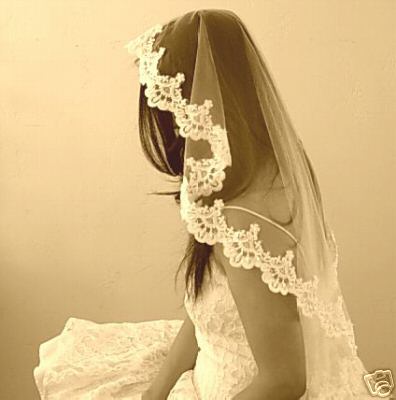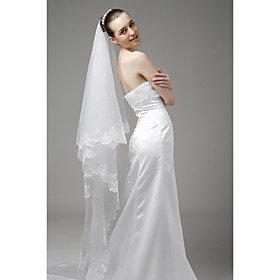History + Tradition + Modern Bride: the Veil
The significance and symbolism of bridal veils: The veils earliest origins were in the near east where it served both to protect against the wind and desert sun as well as to preserve the modesty of women in a time when the use of force was the rule of law. A woman covered her face so her husband wouldn't be killed for her beauty. This was also a time of arranged marriages, with the groom rarely seeing his bride before the wedding day.
In ancient Greece and Rome, the veil became a protection against evil spirits, though there is little evidence that this survived the Christian era. In medieval Europe, the influence of Arab culture grew with the rise of Islam. Arab music, science and art, all came to influence the splintered states of Europe and as the later crusaders returned from the east with wealth and riches; the veil was popularized as everyday wear for women.
Veils came into vogue in the United States when Nelly Curtis wore a veil at her wedding to George Washington's aid, Major Lawrence Lewis. Major Lewis saw his bride-to-be standing behind a filmy curtain and commented to her how beautiful she appeared. She then decided to veil herself for their ceremony. The groom's lifting of the veil signifies his acceptance of the bride. He unwraps his bride as he takes possession of her. Hence, a bride traditionally was given away while a man took a wife. These days, many brides lift their own veils, presenting themselves as equals.
In the modern wedding ceremony, the bridal veil should complement the bridal gown; and so, the most popular colours are white, diamond white, and ivory. Today, veils of tulle and nylon have come to prominence, though old veils - especially family heirlooms - are still considered lucky. It's still commonly said to be 'bad luck' for grooms to see their brides before the ceremony, so perhaps the veil is still offering protection against bad luck.
Today's bride has no limits when it comes to her veil. Shoulder length veils are contemporary, but can add a touch of tradition to a less formal outfit. It can be made in a single or up to four layers of selected fabric. This is a fun look for shorter hair.

Blusher veil styles are a short veil worn over the face, sometimes falling below the neckline. It is an optional part of the veil, and can create a formal effect when worn. In today's fun fashion-forward times the blusher veil has become a veil of its own in the form of the Birdcage Veil.

Fingertip and elbow can be made of up to four layers which gives it volume and movement at the back. These can be flattering with the empire or princess line gowns. It is not really the best choice for shorter brides, because it will make you look even shorter! These can be worn at the crown of the head, leaving the hair bare for a natural look.

Full or Chapel or Sweep this is a more formal veil that extends to the floor. It is traditionally made of three tiers one at the shoulder, one at the waist and then one to the floor. It is a good veil to wear with straight gowns.

Cathedral is perfect for a grand church entrance. The style is the most formal and spectacular with the material flowing dramatically behind the bride.
 *image courtesy of Scarlett Lillian
*image courtesy of Scarlett Lillian

Mantilla is a scarf like circular veil usually made from lace, or lace edged tulle. It is secured with a comb which frames the face and drapes over the head and shoulder. You can also wear the veil in a more dramatic gesture by creating a blusher and wearing the lace near or just past your shoulders (known as a "drop veil").

Three quarter, Ballet or Waltz length falls between the knee and the ankle.

So there you are! The history of veils plus today's options. But as I tell each of my brides: there are no limits for you today. If you want to try something else - go for it! Perhaps you have the next "Big Thing" in bridal veils!

Visit us at A Music City Event or call 615.727.3903
Never miss another update!
Subscribe to MCE Blog to have new tips, advice and Real Nashville Weddings sent directly to you.
And no, we never ever ever share your e-mail with anyone. Period
*Images, except where noted, are courtesy of Google.
